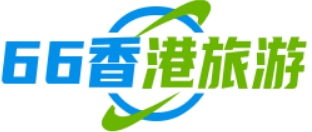本文目录
一、东京文化旅游景点介绍英文版 东京著名景点英文介绍
Arashiyama(岚山?) is a district on the western outskirts of Kyoto, Japan. It also refers to the mountain across the _i River, which forms a backdrop to the district.
Notable tourist sites in Arashiyama include
The Iwatayama Monkey Park on the slopes of Mount Arashiyama. Over 170 monkeys live at the park. While the monkeys are wild, they have become accustomed to humans. The park is located on a small mountain not far from the Saga-Arashiyama rail station. Visitors can approach and photograph the monkeys. At the summit is a fenced enclosure, from within which visitors can feed the monkeys.
The romantic"Moon Crossing Bridge"(渡月桥,Togetsukyō), notable for its views of cherry blossoms and autumn colors on the slopes of Mt Arashiyama.
The tombstone of the Heike courtesan Kogo of Sagano.
Tenryū-ji, the main temple of the Rinzai school, one of the two main sects of Zen Buddhism in Japan.
The hamlet of Kiyotaki, a small scenic village at the base of Mt Atago, the home to a notable Shinto shrine.
Matsuo Shrine, half a mile south of the area, which is home to a blessed spring. It is also one of the oldest shrines in the Kyoto area, founded in 700. The alleged restorative properties of the spring bring many local sake and miso companies to the shrine for prayers that their product will be blessed.
Kameyama koen has a stone commemorating Zhou Enlai's visited to Arashiyama. He was moved by the cherry blossoms and mountain greenery. The four poems Zhou Enlai wrote about his visit are engraved on a stone monument:"Arashiyama in the Rain."
Nijō Castle(二条城,Nijō-jō?) is a flatland castle located in Kyoto, Japan. The castle consists of two concentric rings of fortifications, the Ninomaru Palace, the ruins of the Honmaru Palace, various support buildings and several gardens. The surface area of the castle is 275,000 square meters, of which 8000 square meters is occupied by buildings.
Present plan of Nijō Castle(click for detailed view)In 1601, Tokugawa Ieyasu, the founder of the Tokugawa Shogunate, ordered all the feudal lords in Western Japan to contribute to the construction of Nijō Castle, which was completed during the reign of Tokugawa Iemitsu in 1626. Parts of Fushimi Castle, such as the main tower and the Kara Gate, were moved here in 1625-26.[1] It was built as the Kyoto residence of the Tokugawa Shoguns. The Tokugawa Shogunate used Edo as the capital city, but Kyoto continued to be the home of the Imperial Court. Kyoto Imperial Palace is located north-east of Nijo Castle.
The central keep, or donjon, was struck by lightning and burned to the ground in 1791.日本有名景点
In 1788, the Inner Palace was destroyed by a city-wide fire. The site remained empty until it was replaced by a prince's residence transferred from the Kyoto Imperial Palace in 1893.
In 1867, the Ninomaru Palace was the stage for the declaration by Tokugawa Yoshinobu, returning the authority to the Imperial Court. Next year the Imperial Cabinet was installed in the castle. The palace became imperial property and was declared a detached palace. During this time, the Tokugawa hollyhock crest was removed wherever possible and replaced with the imperial chrysanthemum.
In 1939, the palace was donated to the city of Kyoto and opened to the public the following year.
Ryōan-ji(Shinjitai: _安寺, Kyūjitai:龙安寺?, The Temple of the Peaceful Dragon) is a Zen temple located in northwest Kyoto, Japan. Belonging to the Myoshin-ji school of the Rinzai branch of Zen Buddhism, the temple is one of the Historic Monuments of Ancient Kyoto, a UNESCO World Heritage Site.
The site of the temple was originally a Fujiwara family estate. It eventually came into the hands of the Hosokawa clan branch of the Fujiwaras. Hosokawa Katsumoto inherited the residence, and lived here before the _nin War. Katsumoto willed the war-ravaged property to be converted into a Zen sect temple complex after his death. Later Hosokawa emperors are grouped together in what are today known as the"Seven Imperial Tombs" at Ryoan-ji. The burial places of these emperors-- Uda, Kazan, Ichijō, Go-Suzaku, Go-Reizei, Go-Sanjō, and Horikawa-- would have been comparatively humble in the period after their deaths. These tombs reached their present state as a result of the 19th century restoration of imperial sepulchers(misasagi) which were ordered by Emperor Meiji.[1]
Ryōan-ji's tsukubai(蹲踞?), which is a small basin provided at Japanese Buddhist temples for visitors to purify themselves by the ritual washing of hands and rinsing of the mouth.An object of interest near the rear of the monks quarters is the carved stone receptacle into which water for ritual purification continuously flows. This is the Ryōan-ji tsukubai(蹲踞?), which translates literally as"crouch;" and the lower elevation of the basin requires the user to bend a little bit to reach the water, which suggests supplication and reverence.[2] The kanji written on the surface of the stone are without significance when read alone. If each is read in combination with口(kuchi), which the central bowl is meant to represent, then the characters become吾,唯,足,知. This is read as"ware tada taru(wo) shiru" and translates literally as"I only know plenty"(吾= ware= I,唯= tada= only,足= taru= plenty,知= shiru= know). The meaning of the phrase carved into the top of the tsukubai is simply that"what one has is all one needs" and is meant to reinforce the basic anti-materialistic teachings of Buddhism.
The absence of a dipper is intended to imply that the water is for the soul only and that it is necessary to bend the knee in humility in order to receive its blessing.
Kiyomizu-dera(清水寺?), full name Otowa-san Kiyomizu-dera(音羽山清水寺?) is an independent Buddhist temple in eastern Kyoto. The temple is part of the Historic Monuments of Ancient Kyoto(Kyoto, Uji and Otsu Cities) UNESCO World Heritage site.[1] Not one nail is used in the whole temple. The temple should not be confused with Kiyomizu-dera in Yasugi, Shimane, which is part of the 33-temple route of the Chūgoku 33 Kannon Pilgrimage through western Japan.[2]
其实这些都是维基百科找来的,本来想给链接的,百度说我有广告,只贴了部分,其他的可用google维基百科英文版找,包括景点介绍,历史什么的很全的。
日本又哪些景点(中英文互译的)
大涌谷(Owakudani)是箱根最著名的旅游景点。在绿树环抱的箱根中惟独此处山岩裸露,岩缝间喷出的地热蒸气雾气腾腾,令人感到地球的生命运动,尉为壮观。由此可眺望富士山和箱根群山的美丽景色。
东京迪斯尼有两大主题乐园,七座舒适的大饭店,以及其它购物娱乐设施所组成的欢乐世界。是大人找回童真,小孩寻找快乐的地方。
Tower)位于东京市内,建成于1958年,塔高333米,这座日本最高的独立铁塔上部装有东京都7个电视台、21个电视中转台和广播台等的无线电发射天线。在250米高的地方,也设有一个特别展望台。展望台四边都是落地的大玻璃窗,窗向外倾斜。
Mountain)位于本州岛中南部,海拔3776米,是日本最高峰,日本人奉之为“圣山”,是日本民族的象征,距东京约80公里,跨静冈、山梨两县,面积为90.76平方公里。整个山体呈圆锥状,山顶终年积雪。
Temple)位于奈良市的唐招提寺是由中国唐代高僧鉴真和尚亲手兴建的,是日本佛教律宗的总寺院,这座具有中国盛唐建筑风格的建筑物被确定为日本国宝。
富士山,是一座跨越在日本静冈县(富士宫市、裾野市、富士市、御殿场市、骏东郡小山町)与山梨县(富士吉田市、南都留郡鸣_村)之间的活火山。
东京塔是东京地标性建筑物,位于东京都港区芝公园,高332.6米。东京塔除主要用于发送电视、广播等各种无线电波外、还在大地震发生时发送JR列车停止信号,兼有航标、风向风速测量、温度测量等功能。
阿苏山是日本著名活火山。位于九州岛熊本县东北部,是熊本的象征,以具有大型破火山口的复式火山闻名于世。略呈椭圆形,南北长24公里,东西宽18公里,周围约120公里,面积250平方公里。
4,唐招提寺(Tōshōdai Temple)
唐招提寺,日本佛教律宗建筑群。简称为招提寺。在日本奈良市西京五条。由中国唐朝鉴真主持,于公元759年建成,与东大寺的戒坛院并为传布和研究律学的两大道场。
鹿苑寺(ろくおんじ),是位于日本京都市北区的临济宗相国寺派的寺院。其中,内外都贴满了金箔的三层楼阁建筑(舍利殿)也被称为金阁,包括舍利殿在内的寺院整体也被称为金阁寺(きんかくじ)。该寺为相国寺的山外塔头寺院。
参考资料来源:百度百科-唐招提寺
Tokyo is the capital of Japan.It is the biggest city in Asia and it is also very beatiful.You can see the beatiful mountain in Tokyo.There is snow on it and it looks very nice.I hope on day I can go there.
二、日本JR 东京至京都
1.东京至京都(乘搭东海道.山阳新干线)首先,东海道.山阳新干线把列车服务分成三类。分别是(由最快速开始)のぞみ(Nozomi)[只停最重要车站,班次最多,每小时8班]ひかり(Hikari)[比Nozomi多停一些车站,每小时2班]こだま(Kodama)[停所有车站,每小时2班]由东京至京都运赁 7980円另加新干线的特急料金若乘搭のぞみ(Nozomi) 4730円(自由席) 5540円(指定席)ひかり(Hikari)或こだま(Kodama) 4730円(自由席) 5240円(指定席)来回(乘搭Nozomi指定席)收费是(7980+5540)*2=27040(円) JR东日本 jreast.co.jp/东海道.山阳新干线收费表 jr-odekake/guide/img/shinken_ryoukin.pdf东海道新干线东京駅时刻表 ekikara.jp/newdata/ekijikoku/2301011/down13101011 2. JAPAN RAIL PASS(乘搭新干线)成人七日有效期售价 28
300円不过,使用JAPAN RAIL PASS是不可以乘搭新干线中,速度最快的のぞみ(Nozomi)。而现在,新干线中很多的班次都是のぞみ(Nozomi),但ひかり(Hikari)或こだま(Kodama)的班次较少。 JR Rail Pass japanrailpass/ 3. JAPAN RAIL PASS(来往机场)使用JAPAN RAIL PASS可以用来乘搭由成田机场来往市区的Narita Express(N'EX) Narita Express jreast.co.jp/nex/index jreast.co.jp/e/nex/index jreast.co.jp/tc/nex/index 2008-08-29 21:27:16补充:你可以在成田机场(在第一或第二航厦都可以)的旅游服务中心(びゅうプラザ)或售票处(みどりの窓口)将换票证换成日本鐡路周游券(JR Rail Pass)详情 japanrailpass/zh/zh009
由东京到京都,乘のぞみ(NOZOMI) N-700系的时间是2小时12分,700系的时间是2小时23分,乘ひかり(HIKARI)号的时间是3小时7分,乘ひかり(KODAMA)号是3小时57分,在书局或便利店都有得买时刻表。如果你不想买的话,你可以到车站的指定席票务所去翻阅。如你用7天 JR Pass,是可以乘东京国际机场至市区的那乘车的,但你要到车站的指定席票务所去,跟柜台职员说你要买Narita Express,跟住show你张pass给他看,他便会帮你预约座位,但要记住,要讲给他听那班列车和时间你想坐,否则你就买不到了。时刻表:japanrail/JR_timetableandfare
NOZOMI停站较少、速度较快(约2小时21分)ひかり
こだま停站较多,束度慢一点如你买7天Pass可乘ひかり到京都(约2小时45分)时刻表: asahi-.or.jp/~ev7a-ootk/time/time_01如用JR Pass
可乘NEX由机场出市区 2008-08-29 20:55:59补充:如买新干线或NEX机场出市区的车票无论指定席或自由席可出示你的JR Pass于Green Ticket office换购有关票务员略董英语 2008-08-29 20:58:59补充: NEX机场出市区时间表 jreast-shinken-reservation.eki-/pc/english/mon/timetable/e_nex_u/index 2008-08-29 21:00:34补充:永安购7天 JR Pass约1900元需3天至1星期安排 2008-09-01 21:00:19补充:你在成田空港行落去搭JR列车的入闸口入口旁有绿色ticketing office即时把你在港购的JR Pass换成另一张JR Pass卡服务员会问你由边一天开始用JR Pass
三、东京景点介绍
东京,日本国行政区,位于日本本州岛关东平原南端。下面,我为大家介绍东京景点,希望对大家有所帮助!
踏入浅草寺,你会感受到这里还保留着日本江户时代的氛围,穿过各式各样的小店,品尝和果子,人形烧,还有新鲜烤制的日式薄脆煎饼,绝对让你吃的停不下来。不仅仅是美食,来到浅草寺抽上一签也几乎成了必做之事。
住所:东京都台东区浅草2丁目3-1
来到东京,倘若你厌倦了每天逛逛逛买买买的游客模式,那么一定要来上野恩赐公园溜上一圈,在这里呆上一天也不用花一分钱,周边很多美术馆跟博物馆也几乎都可以免费参观。仙贝最为推荐的是上野动物园,里面真的有很多治愈系的小动物,仅仅是走上一圈也会收获不一样的满足。
如果是去东京,不得不提东京的天空树。不仅周边人气观光景点众多,还有着绝佳高度的至高城市观景台。从天空树高达634米的天空回廊眺望偌大的东京,在氛围绝佳的咖啡厅静静欣赏夜的繁华,是约会的绝佳景点之一。
住所:东京都墨田区押上1丁目1-13
交通:东武伊势崎线业平桥駅から徒歩1分
営业时间: 8:00~22:00(最终入场21:00)
倘若已经去过了天空树,也请一定去观赏一下东京塔。鲜明的红色铁塔无疑是东京观光的名物。由于地理位置更接近市中心,虽然高度不及天空树,但从东京塔上望出去,也绝对能收获不逊色于天空树的绝美城市景观。并且东京塔下就是芝公园,绿意盎然特别适合放松心情。
上野站周边同样给人印象深刻值得一游的还有上野东照宫,全朱漆的宫殿异常气势恢宏,如果是牡丹盛开的时节去还可以观赏到争奇斗艳的牡丹园之景。而东照宫也是日本国家指定的重要文化财产,在这里有着数不胜数的国家文化宝物。
住所:东京都台东区上野公园9-88
有着日本最长久历史的博物馆之称的东京国立博物馆。在这里展示的不仅有日本的美术品,还有亚洲各地区的文化财产。常设两千到三千件左右的艺术品跟文化财产。博物馆爱好者到了这里真的是目不暇接,泡上整整一天也不会厌倦。日本必逛景点
住所:东京都台东区上野公园13-9
交通:东京メトロ上野駅から徒歩で15分
営业时间: 9:30~17:00(最终入馆は~16:30)
东京站可谓是各国游客来到东京开始观光游览的起始站,东京站的面积大概是东京小巨蛋的三倍之大,东京站内大概铺设了30条线路以上的电车,也是日本站台数量第一的车站。而它独有的红砖瓦建成的历史感外观,使得东京站在平成15年被列为日本重要文化财产之一。
住所:东京都千代田区丸の内一丁目
电话番号:(JR东日本お问い合わせセンター)
明治神宫位于都心,但不同于高楼林立的东京站,这里一年四季都有绿木环绕,也是每年日本新年时参拜人数最多的神社之一。这里一年四季风景都是美如油画,然而最为出名的还是初秋银杏染黄的大道,吸引了无数观光游客。
住所:东京都渋谷区代々木神园町1-1
明治神宫外苑的西北部之处,有着日本皇室庭院的新宿御苑,而新宿御苑正式对公众开放还是在二战之后。都心部内少见的法式庭院和英式庭院都可以在这里观赏到。而有着四季变化之美的秋季也是人气的休憩地点。
交通:新宿御苑前駅から徒歩で5分
営业时间: 9:00~16:30(最终入园は16:00)日本必看景点
如果你想去展望台一览城市全景,却又不想花费太多,那么东京都厅展望室一定是绝佳选择,虽然是政府办公地,但周末和平日的夜晚都可以登高一览城市夜景,而且是完全免费!但需要注意的是周一周二展望台关闭没有办法参观。
アクセス:新宿駅から徒歩で10分
営业时间: 9:30~23:00(最终入馆は22:30)
电话番号:(展望室専用案内电话)
这里是人气的动漫美术馆,如果你是宫崎骏动画的爱好者,那么这里一定要来参观。馆内陈列了大量动画中登场过的动画人物和形象,由于过于人气,来这里之前建议大家提前一个月左右预约门票。
住所:东京都三鹰市下连雀1-1-83
営业时间: 10:00~18:00(入场指定时间あり)
现今日本的居住地,也是东京的'最最中心的位置,这里大概有着东京最美的绿地,周边不仅有可以放松身心的公园,樱花时期还可以乘船游览千鸟之渊。
2017年将是井之头恩赐公园的百年纪念。而这里最为出名的还是樱花时节绝佳的赏樱处,井之头池还是当年德川家光命名的,保留至今。来到吉祥寺一定要来这里寻找安定感和开放感。










